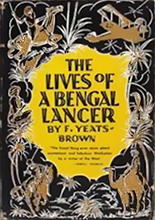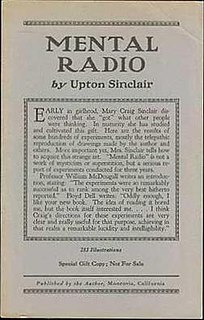 W
WCivilization and Its Discontents is a book by Sigmund Freud, the founder of psychoanalysis. It was written in 1929 and first published in German in 1930 as Das Unbehagen in der Kultur. Exploring what Freud sees as the important clash between the desire for individuality and the expectations of society, the book is considered one of Freud's most important and widely read works, and was described in 1989 by historian Peter Gay as one of the most influential and studied books in the field of modern psychology.
 W
WThe Genetical Theory of Natural Selection is a book by Ronald Fisher which combines Mendelian genetics with Charles Darwin's theory of natural selection, with Fisher being the first to argue that "Mendelism therefore validates Darwinism" and stating with regard to mutations that "The vast majority of large mutations are deleterious; small mutations are both far more frequent and more likely to be useful", thus refuting orthogenesis. First published in 1930 by The Clarendon Press, it is one of the most important books of the modern synthesis, and helped define population genetics. It is commonly cited in biology books, outlining many concepts that are still considered important such as Fisherian runaway, Fisher's principle, reproductive value, Fisher's fundamental theorem of natural selection, Fisher's geometric model, the sexy son hypothesis, mimicry and the evolution of dominance. It was dictated to his wife in the evenings as he worked at Rothamsted Research in the day.
 W
WGrowing Up in New Guinea is a 1930 publication by Margaret Mead. The book is about her encounters with the indigenous people of the Manus Province of Papua New Guinea before they had been changed by missionaries and other western influences. She compares their views on family, marriage, sex, child rearing, and religious beliefs to those of westerners.
 W
WIn the Land of Pain is a collection of notes by Alphonse Daudet chronicling the pain and suffering he experienced from tabes dorsalis, its effects on his relationships with friends, family, and other people, and the various drugs he took and physical treatments he underwent in his fight against the disease. Daudet originally began making these notes for a projected book, but none of the material was published in his lifetime. He planned to use the title La Doulou, a Provençal word for pain. The collection was published in French in 1930 in a volume titled La Doulou : 1887–1895 et Le Trésor d'Arlatan: 1897, and translated into English in 2002 by Julian Barnes.
 W
WThe Lives of a Bengal Lancer is a 1930 autobiography of British cavalry officer Francis Yeats-Brown published by The Viking Press. The autobiography's release was met with highly positive reviews and Yeats-Brown was awarded the James Tait Black Memorial Prize of 1930.
 W
WMemories and Vagaries is a collection of short memoirs and essays by Axel Munthe published in several languages and editions, with differing contents and ordering.
 W
WMental Radio: Does it work, and how? (1930) was written by the American author Upton Sinclair and initially self-published. This book documents Sinclair's test of psychic abilities of Mary Craig Sinclair, his second wife, while she was in a state of profound depression with a heightened interest in the occult. She attempted to duplicate 290 pictures which were drawn by her brother. Sinclair claimed Mary successfully duplicated 65 of them, with 155 "partial successes" and 70 failures. The experiments were not conducted in a controlled scientific laboratory environment.
 W
WThe Merck Index is an encyclopedia of chemicals, drugs and biologicals with over 10,000 monograph on single substances or groups of related compounds published online by the Royal Society of Chemistry.
 W
WMy Early Life, also known in the USA as A Roving Commission: My Early Life, is a 1930 book by Winston Churchill. It is an autobiography from his birth in 1874 to around 1902. The book closes with mention of his marriage in 1908, stating that he lived happily ever after.
 W
WMy Life: An Attempt at an Autobiography is the name of the Russian revolutionary Communist leader Leon Trotsky's autobiography. The book was first published in 1930 and was written in the first year of Trotsky's exile in Turkey. It covers the time from his youth, through the Revolution of 1905, the Revolution of 1917, the Russian Civil War up to his struggle against Stalinism and eventual expulsion from the Communist Party.
 W
WThe Myth of the Twentieth Century is a 1930 book by Alfred Rosenberg, one of the principal ideologues of the Nazi Party and editor of the Nazi paper Völkischer Beobachter. The titular "myth" is "the myth of blood, which under the sign of the swastika unchains the racial world-revolution. It is the awakening of the race-soul, which after long sleep victoriously ends the race chaos."
 W
WNew York is a 1930 travel book by the French writer Paul Morand. Morand visited New York four times between 1925 and 1929 and shares his experiences from those trips, with a non-native reader in mind. An English translation by Hamish Miles was published in 1930.
 W
WOur Authorized Bible Vindicated is a book written by Seventh-day Adventist scholar Benjamin G. Wilkinson advocating the King James Only (KJO) position, published in 1930. It asserted that some of the new versions of the Bible coming out, came from manuscripts with corruptions introduced into the Septuagint with additional texts, which came to be called "Apocrypha", and manuscripts with deletions and changes from corrupted Alexandrian text brought in by manuscript readings in the Greek New Testament adopted by Brooke Foss Westcott and Fenton John Anthony Hort. While King-James-Only advocacy existed prior to the writing of this book, many of the arguments in the book have since become set talking-points of many who support the belief, thanks in large part to Baptist Fundamentalist preacher David Otis Fuller, who adopted them into much of his own material, such as the book, Which Bible?.
 W
WThe Permanent Revolution is a political theory book by communist leader Leon Trotsky. Its title is the name of the concept of permanent revolution advocated by Trotsky and Trotskyists in opposition to the concept of socialism in one country as advocated by Joseph Stalin and Stalinists. It was first published by the Left Opposition in the Russian language in Germany in 1930.
 W
WThe Physical Principles of the Quantum Theory (German: Physikalischen Prinzipien der Quantentheorie publisher: S. Hirzel Verlag, 1930) by Nobel laureate (1932) Werner Heisenberg and subsequently translated by Carl Eckart and Frank C. Hoyt. The book was first published in 1930 by University of Chicago Press. Then in 1949, according to its copyright page, Dover Publications reprinted the "unabridged and unaltered" 1930's version.
 W
WThe Principles of Quantum Mechanics is an influential monograph on quantum mechanics written by Paul Dirac and first published by Oxford University Press in 1930. Dirac gives an account of quantum mechanics by "demonstrating how to construct a completely new theoretical framework from scratch"; "problems were tackled top-down, by working on the great principles, with the details left to look after themselves". It leaves classical physics behind after the first chapter, presenting the subject with a logical structure. Its 82 sections contain 785 equations with no diagrams.
 W
WThe Reconstruction of Religious Thought in Islam is a compilation of lectures delivered by Muhammad Iqbal on Islamic philosophy and published in 1930. These lectures were delivered by Iqbal in Madras, Hyderabad, and Aligarh. The last chapter, "Is Religion Possible", was added to the book from the 1934 Oxford Edition onwards.
 W
WRoosevelt: The Story of a Friendship is a biography by Owen Wister, depicting his long acquaintance with Theodore Roosevelt, a Harvard classmate. It was published in 1930.
 W
WThe Science of Life is a book written by H. G. Wells, Julian Huxley and G. P. Wells, published in three volumes by The Waverley Publishing Company Ltd in 1929–30, giving a popular account of all major aspects of biology as known in the 1920s. It has been called "the first modern textbook of biology" and "the best popular introduction to the biological sciences". Wells's most recent biographer notes that The Science of Life "is not quite as dated as one might suppose".
 W
WTaos Pueblo is a book by Ansel Adams and Mary Hunter Austin. Originally published in 1930, it is the first book of Adams' photographs. A seminal work in his career, it marks the beginning of a transition from his earlier pictorialist style to his signature sharp-focused images of the Western landscape. Because of the quality of the images and its place in the development of Adams' style, it has been described as "an astonishingly poignant…masterpiece" and "the greatest pictorial representation of the American West."